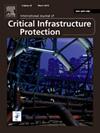International perspectives on critical infrastructure: Evaluation criteria and definitions
IF 5.3
3区 工程技术
Q1 COMPUTER SCIENCE, INFORMATION SYSTEMS
International Journal of Critical Infrastructure Protection
Pub Date : 2025-05-09
DOI:10.1016/j.ijcip.2025.100761
引用次数: 0
Abstract
Contemporary society heavily relies on systems that process, store, and transmit sensitive and confidential information. However, defining what constitutes critical assets and how to categorize them presents challenges. In this context, applying criteria for classifying Critical Infrastructures (CIs) is essential to determine their criticality for information owners. This study aims to identify which criteria are used to classify an asset as part of CIs based on data from various nations. The methodology adopted involved analyzing public documents that evaluated the definitions and assessment criteria of CIs from 12 countries and organizations. The study’s results provide a technical understanding of the criteria used to define Critical Infrastructures CIs among the analyzed countries, highlighting a predominance of criteria related to people, social aspects, economic factors, geographic considerations, and interdependencies. These findings indicate a consistent alignment among the studied nations regarding the criteria that define their respective CIs. These findings have practical implications for risk and asset managers, equipping them with the necessary knowledge to apply CI assessment methodologies effectively.
关键基础设施的国际视角:评价标准和定义
当代社会严重依赖于处理、存储和传输敏感和机密信息的系统。然而,定义什么构成了关键资产以及如何对它们进行分类是一项挑战。在这种情况下,应用对关键基础设施(ci)进行分类的标准对于确定其对信息所有者的重要性至关重要。本研究旨在根据各国的数据确定哪些标准用于将资产分类为ci的一部分。所采用的方法包括分析评价12个国家和组织的ci定义和评价标准的公开文件。该研究的结果提供了对所分析国家中用于定义关键基础设施ci的标准的技术理解,强调了与人、社会方面、经济因素、地理考虑和相互依赖性相关的标准的优势。这些发现表明,在所研究的国家中,对于定义各自ci的标准,存在一致的一致性。这些发现对风险和资产管理人员具有实际意义,使他们具备有效应用CI评估方法的必要知识。
本文章由计算机程序翻译,如有差异,请以英文原文为准。
求助全文
约1分钟内获得全文
求助全文
来源期刊

International Journal of Critical Infrastructure Protection
COMPUTER SCIENCE, INFORMATION SYSTEMS-ENGINEERING, MULTIDISCIPLINARY
CiteScore
8.90
自引率
5.60%
发文量
46
审稿时长
>12 weeks
期刊介绍:
The International Journal of Critical Infrastructure Protection (IJCIP) was launched in 2008, with the primary aim of publishing scholarly papers of the highest quality in all areas of critical infrastructure protection. Of particular interest are articles that weave science, technology, law and policy to craft sophisticated yet practical solutions for securing assets in the various critical infrastructure sectors. These critical infrastructure sectors include: information technology, telecommunications, energy, banking and finance, transportation systems, chemicals, critical manufacturing, agriculture and food, defense industrial base, public health and health care, national monuments and icons, drinking water and water treatment systems, commercial facilities, dams, emergency services, nuclear reactors, materials and waste, postal and shipping, and government facilities. Protecting and ensuring the continuity of operation of critical infrastructure assets are vital to national security, public health and safety, economic vitality, and societal wellbeing.
The scope of the journal includes, but is not limited to:
1. Analysis of security challenges that are unique or common to the various infrastructure sectors.
2. Identification of core security principles and techniques that can be applied to critical infrastructure protection.
3. Elucidation of the dependencies and interdependencies existing between infrastructure sectors and techniques for mitigating the devastating effects of cascading failures.
4. Creation of sophisticated, yet practical, solutions, for critical infrastructure protection that involve mathematical, scientific and engineering techniques, economic and social science methods, and/or legal and public policy constructs.
 求助内容:
求助内容: 应助结果提醒方式:
应助结果提醒方式:


